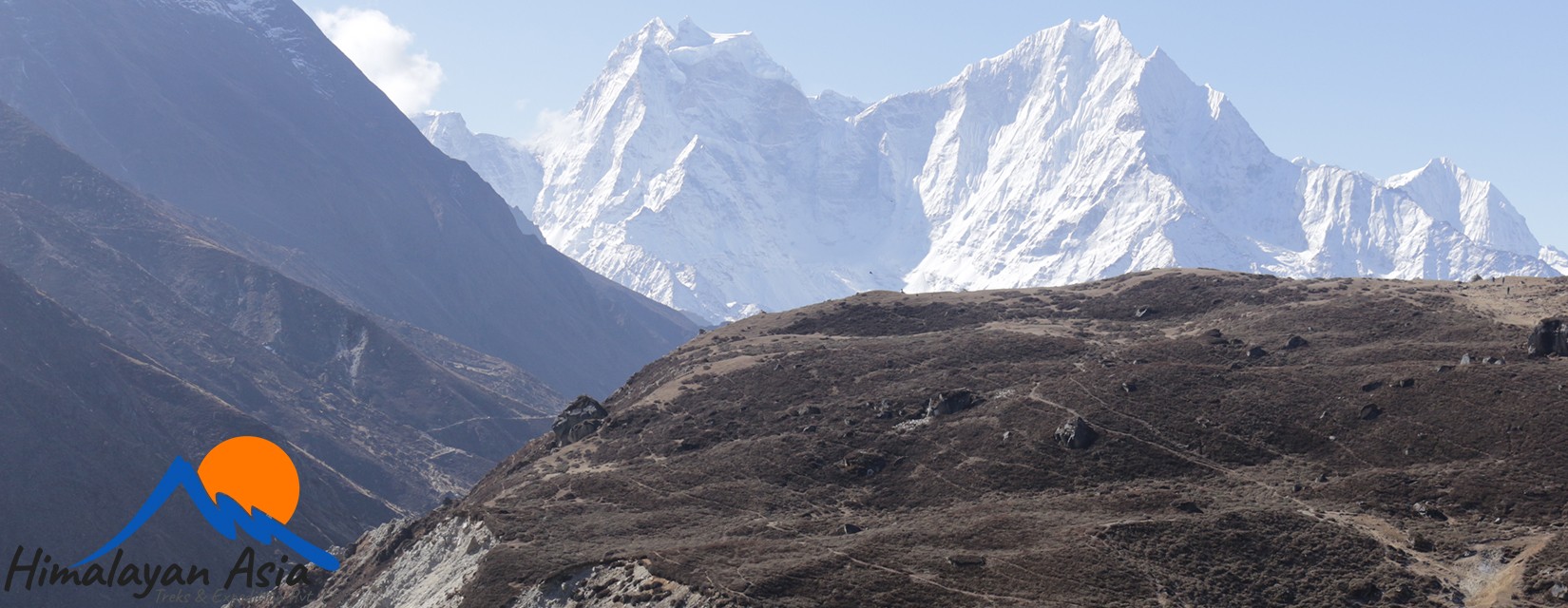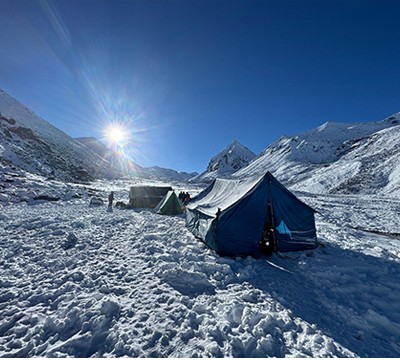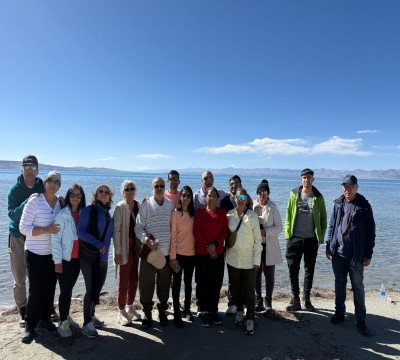Planning an Everest Base Camp trek is a dream for many adventure seekers, but proper preparation is the key to success. Our Everest Base Camp trek guide at Himalayan Asia Treks provides essential tips for a safe and unforgettable journey. From understanding the Everest Base Camp trek route and Everest Base Camp trek distance to acclimatization strategies for Everest Base Camp altitude sickness, we cover everything you need. Discover the best time to trek to Everest Base Camp, expert packing advice, and insights into Everest Base Camp trek cost and permits. Whether you’re wondering how hard is it to trek to Everest Base Camp without Lukla flight or planning a luxury Everest Base Camp trek with helicopter return, our comprehensive guide ensures your trek is both adventurous and safe. Start your journey with Himalayan Asia Treks and make your Everest Base Camp trekking experience truly memorable.
Everest Base Camp Trek Advice | Expert Tips & Preparation Guide
Table of Contents
Advice for Everest Base Camp Trek
Trekking to Everest Base Camp is an exhilarating adventure that requires careful planning and preparation. Here are some essential pieces of advice to help you make the most of your Everest Base Camp Trek:
Physical Fitness: Prioritize your physical fitness before embarking on the trek. Regular cardiovascular exercises, strength training, and hiking in hilly terrains will help prepare your body for the demands of the trek.
- Acclimatization: The altitude is a significant challenge during the Everest Base Camp Trek. Take your time to acclimatize and allow your body to adjust to the changing altitude. Take rest days, ascend gradually, and stay hydrated. Listen to your body and be aware of symptoms of altitude sickness, such as headaches, dizziness, and nausea.
- Pack Wisely: Pack essential trekking gear and clothing but avoid overpacking. Some crucial items include a good pair of hiking boots, warm clothing layers, a down jacket, a sleeping bag, a hat, sunglasses, sunscreen, a first aid kit, and trekking poles. Pack light and prioritize lightweight, moisture-wicking, and quick-drying materials.
- Hydration and Water: Stay hydrated throughout the trek by drinking plenty of water. Carry a reusable water bottle and use water purification tablets or filters to treat water from local sources. Avoid drinking untreated water to prevent waterborne illnesses.
- Proper Trekking Gear: Invest in good-quality trekking gear, especially footwear. Your boots should be comfortable, waterproof, and provide ankle support. Test them before the trek to avoid blisters and discomfort.
- Trek with a Guide or Group: Consider trekking with an experienced guide through local trekking company in Nepal. They can provide valuable assistance, local knowledge, and support throughout the journey. Additionally, trekking with others enhances safety and offers a more enjoyable experience.
- Slow and Steady Pace: Maintain a slow and steady pace during the trek to conserve energy and reduce the risk of altitude sickness. Take breaks frequently to rest and enjoy the breathtaking scenery.
- Respect the Environment and Local Culture: Practice responsible tourism by respecting the environment and local culture. Do not litter, follow designated trails, and be mindful of local customs and traditions. Engage with the local community in a respectful manner.
- Weather Conditions: Be prepared for fluctuating weather conditions. Dress in layers to accommodate temperature changes and bring a waterproof jacket and pants to protect against rain or snow. Check the weather forecast regularly and plan accordingly.
- Travel Insurance: Purchase comprehensive travel insurance that covers medical emergencies and evacuation, as well as trip cancellations or delays. Make sure the insurance covers high-altitude trekking activities.
- Always Choose best travel itinerary which is mentioned on following.
Day 1: Arrival in Kathmandu
Arrive in Kathmandu, the capital city of Nepal. Rest and prepare for the trek. Take a stroll around the vibrant streets of Thamel and enjoy the local cuisine.
Day 2: Fly to Lukla (2,800 meters) and Trek to Phakding (2,652 meters- 4 hours)
Fly from Kathmandu to Lukla, a small mountain airstrip. Begin the trek by descending to Phakding, passing through lush forests and crossing suspension bridges over the Dudh Koshi River.
Day 3: Trek to Namche Bazaar (3,440 meters- 6 hours)
Continue trekking along the Dudh Koshi River, crossing several suspension bridges. Ascend steeply through the beautiful pine forests to reach Namche Bazaar, the bustling Sherpa town and the gateway to the Everest region.
Day 4: Acclimatization Day in Namche Bazaar
Take a day to acclimatize to the high altitude. Explore Namche Bazaar, visit the local market, and hike to the Everest View Hotel for stunning views of Mount Everest and the surrounding peaks.
Day 5: Trek to Tengboche (3,860 meters- 6 hours)
Trek through rhododendron forests, crossing the Dudh Koshi River. Pass through the village of Tashinga and ascend to Tengboche, home to the famous Tengboche Monastery with panoramic views of Everest, Ama Dablam, and other peaks.
Day 6: Trek to Dingboche (4,410 meters- 6 hours)
Descend through forests and cross the Imja Khola River. Climb up to Pangboche and continue to Dingboche, a beautiful village in the Khumbu region with breathtaking views of the surrounding mountains.
Day 7: Acclimatization Day in Dingboche
Another day for acclimatization. Take a short hike to Nagarjun Hill or explore the village of Dingboche. Enjoy the spectacular mountain views and prepare for the higher altitudes.
Day 8: Trek to Lobuche (4,910 meters- 6 hours)
Ascend through the Khumbu Khola Valley, passing Dughla and climbing up to the memorial site of mountaineers who lost their lives on Everest. Continue trekking to Lobuche, a small settlement with incredible views of Nuptse, Pumori, and other peaks.
Day 9: Trek to Gorak Shep (5,164 meters) and hike to Everest Base Camp (5,364 meters - 7 hours)
Trek to Gorak Shep, the last settlement before Everest Base Camp. Leave your belongings at the lodge and hike to Everest Base Camp. Marvel at the Khumbu Icefall and enjoy the sense of achievement. Return to Gorak Shep for the night.
Day 10: Hike to Kala Patthar (5,545 meters) and Trek back to Pheriche (4,240 meters-8 hours)
Early morning hike to Kala Patthar, a viewpoint renowned for its panoramic views of Everest, Lhotse, and other Himalayan giants. Descend to Gorak Shep, have breakfast, and continue descending to Pheriche for the night.
Day 11: Pheriche to Namche Bazaar (7 hours)
Descend through Pangboche and Tengboche, retracing your steps back to Namche Bazaar. Enjoy the downhill trek and celebrate your accomplishments.
Day 12: Trek to Lukla (6 hours)
Continue descending to Lukla, passing through Phakding. This is your last day of trekking, and you can celebrate the completion of the Everest Base Camp Trek with your fellow trekkers and guides.
Day 13: Fly to Kathmandu.
Fly back to Kathmandu from Lukla. Spend the rest of the day exploring the city, shopping for souvenirs, or relaxing.
Day 14: Departure from Kathmandu
Depart from Kathmandu with wonderful memories of your Everest Base Camp Trek adventure.
Lastly, remember to savor every moment of your Everest Base Camp Trek. It's a once-in-a-lifetime experience that will leave you with incredible memories. Stay positive, enjoy the journey, and be amazed by the stunning landscapes that surround you.



